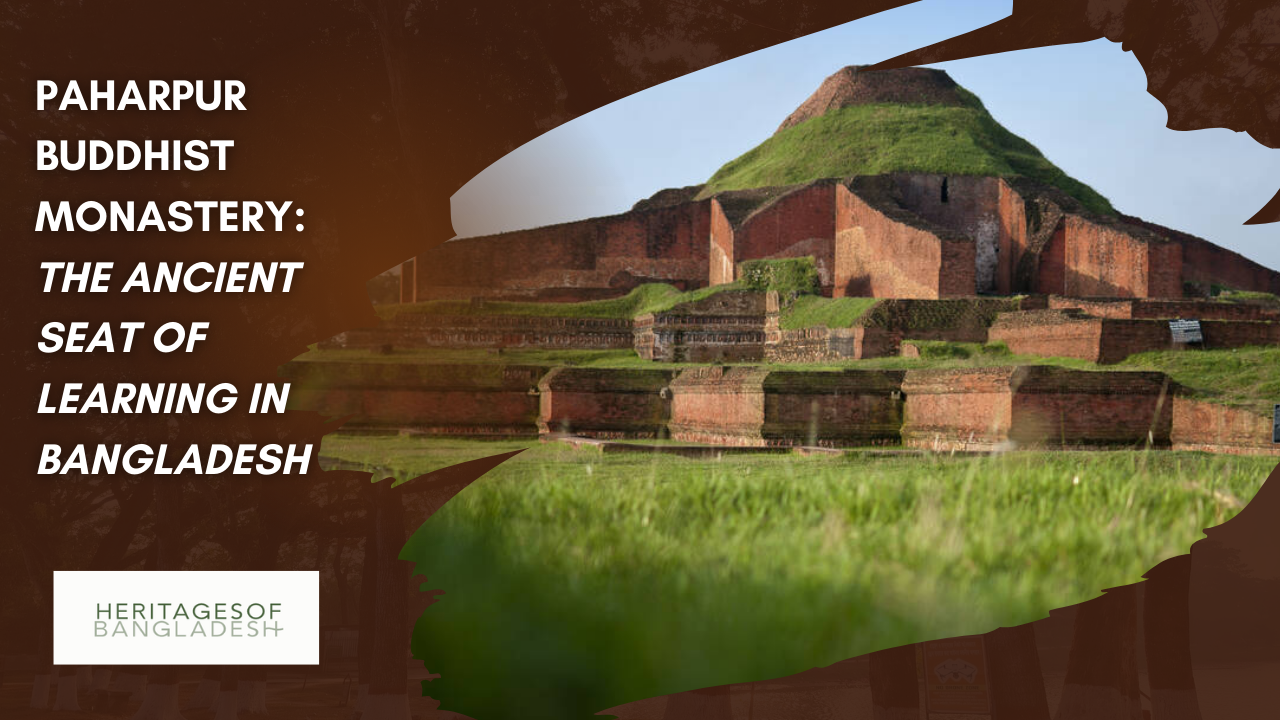Bangladesh, though a young nation by age, is home to civilizations that date back millennia. Among its many archaeological treasures, Somapura Mahavihara—popularly known as Paharpur Buddhist Monastery—stands as a towering monument of spiritual, educational, and architectural excellence. This 8th-century monastic complex offers a glimpse into a time when the land of Bengal was a thriving hub of Buddhist scholarship and transnational cultural exchange.
Historical Background
Paharpur was established during the reign of Dharma Pala, the second ruler of the Pala Dynasty (circa 781–821 CE), which ruled much of the eastern Indian subcontinent. The Palas were strong patrons of Mahayana and Vajrayana Buddhism, and under their reign, Bengal emerged as a flourishing center for Buddhist learning and monastic culture.
Somapura Mahavihara was not only a religious institution but also a major university of its time, comparable to Nalanda and Vikramashila in India. The monastery hosted hundreds of monks, scholars, and students, attracting pilgrims and intellectuals from across Asia — including Tibet, Nepal, China, and Sri Lanka.
Architectural Marvel
Spread across approximately 27 acres, Somapura Mahavihara is one of the largest Buddhist viharas south of the Himalayas. The complex is built in a quadrangular layout, enclosed by high walls with 177 individual monk cells, meditation halls, and prayer rooms arranged around a central courtyard.
At the heart of the site stands a towering central shrine, believed to be a unique example of a pyramid-shaped structure combining influences from Gupta, Southeast Asian, and local Bengali architecture. The outer walls are decorated with terracotta plaques that illustrate scenes from Jataka tales, daily rural life, Hindu epics, and Buddhist symbols—providing deep insight into the cultural life of 8th–12th century Bengal.
Intellectual and Cultural Legacy
Paharpur was not just a monastic complex—it was a cosmopolitan knowledge center. Ancient texts and archaeological findings suggest that it served as a training ground for monks and scholars who spread Buddhist teachings throughout East and Southeast Asia. Its educational influence reached as far as Java and Sumatra, as the architectural layout of Paharpur inspired structures like the Borobudur Temple in Indonesia.
The monastery functioned as a multi-religious hub, showing strong syncretic elements of Buddhism, Hinduism, and even Jainism. This reflects the religious tolerance and diversity of the Pala Empire, where philosophical debate and coexistence thrived.
Rediscovery and Preservation
The ruins of Paharpur were rediscovered by British surveyor Buchanan Hamilton in the early 19th century, but systematic excavation started in the 1920s under the direction of the Archaeological Survey of India and later, the Department of Archaeology of Bangladesh.
In 1985, Somapura Mahavihara was inscribed as a UNESCO World Heritage Site, recognizing its outstanding cultural and historical value. Despite conservation efforts, the site faces challenges from climatic wear, inadequate maintenance, and local encroachments. More sustainable preservation efforts and awareness among locals and tourists are crucial to safeguarding this national treasure.
Visiting Paharpur Today
Located in Badalgachhi Upazila of Naogaon District, the site is accessible from Rajshahi or Bogura and makes a fascinating day trip for both domestic and international visitors. A small on-site museum houses excavated artifacts, including coins, sculptures, inscriptions, and pottery.
The quiet and mystical atmosphere of the ruins, set against rural backdrops, makes Paharpur not only a historical journey but a spiritual and educational experience.
Conclusion
The Paharpur Buddhist Monastery is more than a relic of the past—it’s a testament to Bangladesh’s deep-rooted contribution to global history, religion, and education. As a symbol of unity in diversity, intellectual pursuit, and architectural brilliance, it stands tall as a heritage that every Bangladeshi can be proud of.
By exploring Paharpur, we do not just walk through ancient bricks—we walk through the soul of a civilization that lit the lamps of knowledge across continents.

